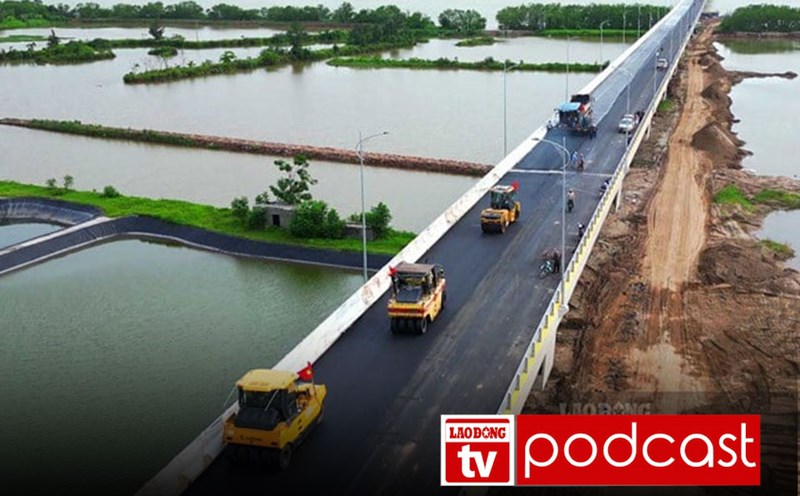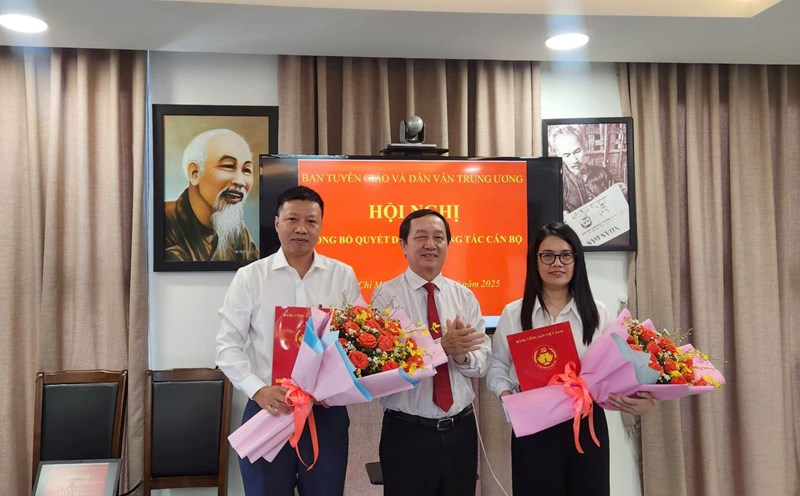As one of the 8 key projects of Hanoi that were started and inaugurated to celebrate the 80th anniversary of the August Revolution and National Day on September 2, Ngoc Hoi Bridge is an important item of the Ring Road 3.5, helping to connect the urban axes of Southeast Hanoi with neighboring provinces and cities such as Hung Yen and Hai Phong.
The project is implemented in Thanh Tri, Gia Lam (Hanoi City) and Van Giang (Hung Yen Province), with an implementation period from 2025 - 2028. This is a group A project with a total investment of VND 10,197 billion from the central budget and the Hanoi City budget.

According to the design, the bridge is 30m wide, with 4 car lanes and 2 mixed lanes. The project not only "transforms" the regional infrastructure, but also opens up new development directions for the whole region. In addition to enhancing connectivity and promoting socio-economic development, Ngoc Hoi Bridge will significantly reduce the load on existing routes such as Thanh Tri Bridge and Chuong Duong Bridge, which are often congested, especially during rush hour. When completed and put into use, Ngoc Hoi Bridge will connect Hanoi with Hung Yen, creating favorable conditions for travel, promoting economic, cultural and tourism exchanges; and is expected to become a big boost for the real estate market in the East and South of Hanoi thanks to its ability to attract investment and residents.
In addition, the Ngoc Hoi bridge project is expected to complete the planning of Ring Road 3.5, contributing to the formation of a modern and synchronous transportation system; at the same time, bringing architectural and cultural values when the project is designed modernly, symbolically, expressing the identity of the capital.
According to Dr. Architect Dao Ngoc Nghiem - Vice President of the Vietnam Urban Planning and Development Association, the construction of Ngoc Hoi bridge will facilitate regional linkages, affirming the central role of Hanoi. At the same time, the project also creates advantages for provinces to call for investment and develop the socio-economy. He emphasized that the construction of more bridges not only reduces traffic pressure and reduces the population in the inner city but also contributes to the effective use of land funds to restructure the economy and develop new residential areas. Each bridge is associated with a historical period and bears the cultural imprint of the capital.

Recorded at the project area, the majority of people expressed their excitement, hoping for a bridge soon to increase connectivity and promote socio-economic development. However, they also expect the government to have a resettlement plan suitable for the living conditions of the people.
Mr. Nguyen Van Tuan (residing in Hamlet 1, Viet Yen Village, Nam Phu Commune, Hanoi) said that his family has lived here for many generations. The construction of bridges and roads to develop the local economy, trade goods and improve people's lives is necessary.
Previously, his family gave up land for the Phap Van - Cau Gie expressway project; now the resettlement area of that project is in the area of land clearance to build Ngoc Hoi bridge. Mr. Tuan affirmed that the family always agrees and complies with regulations, but hopes that the State will have a reasonable compensation policy to soon stabilize life in the new place.
Mr. Pham Van Hung - Head of Viet Yen village said that the village has 9 hamlets with 761 households, of which about 220 households are subject to compensation for agricultural land and water surface (land 64), more than 100 households are subject to compensation for residential land in hamlets 1 and 2. People support the construction of infrastructure works to develop the country, but hope that the new place will be equal to or better than the old place. At the same time, it is necessary to plan reasonably so that people have residential land and production land near each other, avoiding the situation of production land in one place, housing in one place, causing difficulties for daily life and production and business.
The investment project to build Ngoc Hoi bridge and access roads at both ends of the bridge has a total length of about 7.5km, of which the section passing through Hanoi city is about 5.2km long, the section passing through Hung Yen province is about 2.3km long.
The starting point of the project connects with the end point of the Ring Road 3.5 section Phuc La - Van Phu to Phap Van - Cau Gie Expressway; the end point is at Km7+500, connecting with Ring Road 3.5.
The main bridge across the Red River is about 680m long, 32.3m wide, ensuring 6 lanes for motor vehicles and 2 lanes for mixed vehicles. The approach bridge is about 6.58km long and 33m wide. The project synchronously builds a technical infrastructure system, lighting, a smart traffic system and traffic organization.













